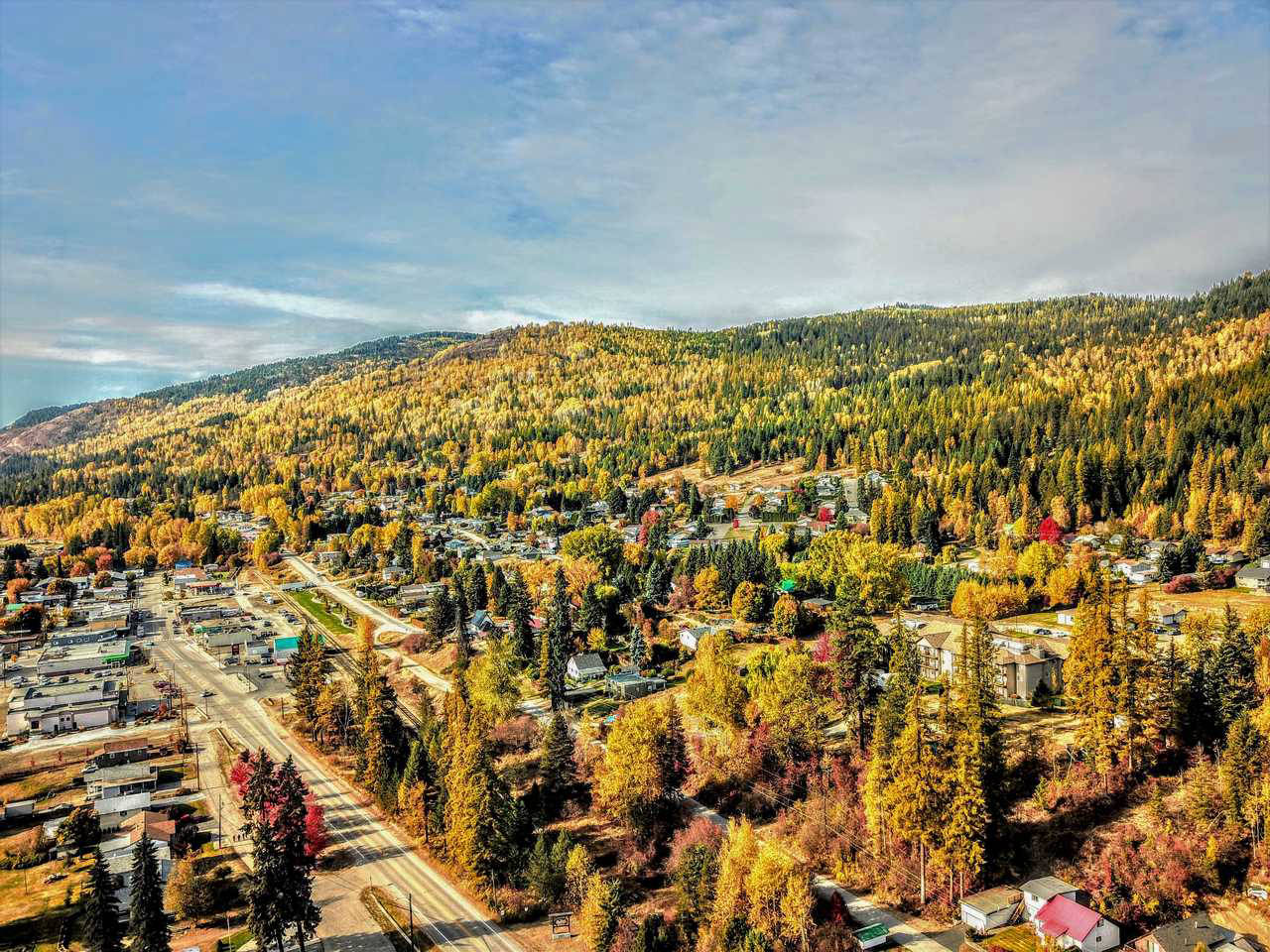LOCAL ECONOMIC IMPACT OF RNG
RNG is a proven economic driver for local businesses, governments, and municipalities.
REN’s privately developed RNG production facility can result in:
- Increased revenues in local goods and services.
- Job creation and business opportunities that arise from the construction, operation and maintenance of RNG infrastructure.
- Providing long term contracts to purchase bush and mill residuals will provide underlying economic strength to the forest industry in the area.
REN Energy is committed to using local businesses wherever possible, both in fabrication, construction, and in ongoing operations.


HOW DOES RNG HELP YOU AND YOUR HOUSEHOLD?
RNG is a clean, affordable, and reliable energy option, that behaves like conventional natural gas in all heating applications. Local utilities can send it directly to your home without any cost of upgrading or adjusting existing appliances.
During power outages, RNG can also be tapped to provide reliable, sustainable energy. This dependability is also why it is already being used to power essential services for food storage, airports, universities, hospitals, and other important facilities.
Frequently Asked Questions
Common questions and concerns related to RNG in your community
Economic
What economic benefits will this bring to the region?
The benefits to the community are substantial, beginning with jobs, business opportunities and the environment. REN will only use waste wood products including residuals or waste from SFI (Sustainable Forest Initiative) forest operations. As a result, the reduction of abandoned or burned forestry residuals will reduce harmful methane emissions, improve forest biology, and encourage forest regrowth. Providing long term contracts to purchase mill residuals will provide underlying economic strength to the forest industry in the region.
How many new jobs will be created?
At the plant itself there will be 20 to 30 new (direct) full time jobs; and there will be an estimated 70 new full time indirect (service industry) jobs created.
Are local businesses already involved; and to what extent?
Yes – REN is developing long term biomass supply contracts with several local mills, amounting to about $4 million/year, and will be spending an additional $8 to $10 million in local employee wages and services. REN is committed to using local businesses wherever possible, both in fabrication/construction, and in ongoing operations.
Local Community
Will there be a town hall or open house to let residents know what’s going on?
Yes – Due to Covid-19 health we held a Virtual Town Hall March 16, 2021. We had a great time answering the many questions and are now adding them to our site. Keep checking back as we continually add updated information.
When will this construction begin and how long before its finished?
Construction is scheduled to start in 2023, and the plant is scheduled for commissioning in Q3 2024.
Does REN expect to expand in the area?
Yes – REN is investigating opportunities to:
– Double the capacity of the Fruitvale Plant
– Build two additional plants within the South Kootenays
When will the plant be up and running?
Q3 2024 is a projected time frame subject to current supply chain uncertainty.
If I have biomass, can I sell it to REN?
Possibly, yes – please contact REN to assess and develop your opportunity
Who can I contact for more information regarding (i) being a supplier; (ii) the overall project; (iii) the technology; (iv) becoming a partner or investor?
General inquiries can be sent to [email protected]. Employment, Supplier and Contractor inquiries can be sent to [email protected]. If you are interested in becoming a partner or investor your request can be sent to [email protected]
Environmental
What is the feedstock source for the project? (Feedstock is the material used to create Renewable natural gas)
REK will be processing waste-wood only, including:
- Hog-fuel bark, shavings etc
- Forest residuals
- Slash
- Construction waste
- We are not able/willing to accept: grass cuttings, leaves, etc.
(Note: no ‘merchantable’ wood or sawlogs are going to be used)
What is the process – torrefaction, pyrolysis, anaerobic digestion, gasification, other…?
The process is a combination of commercially proven technologies, with the primary process components being:
Feed preparation (loading & prep)
Gasification (direct)
Syngas cleaning
Methanation
Note: The system is fully enclosed from the gasifier through to the methanation stage, and there are no particulates or hydrocarbons released into the atmosphere once the biomass has entered the gasifiers.
How much feedstock is required to produce 1.0 million GJ of RNG?
A Gigajoule is an energy measurement of natural gas. A Gigajoule (GJ) is a measurement of the energy contained in the RNG. Between 80,000 and 90,000 ODMT of feedstock is required annually (approximately 250 ODMT per day- ODMT is oven dry metric tonne). .
What does “RNG” stand for?
RNG stands for Renewable Natural Gas, and means the methane is produced from a renewable feed-source (in REN’s case: woody biomass from trees) and not from fossil sources. RNG and natural gas are the same in chemical composition and fully interchangeable
Is there a difference between RNG and Natural Gas (NG) I am typically delivered by Fortis?
There is no chemical difference between RNG and NG.
What is the difference between “RNG” and “SNG”?
SNG stands for Synthetic Natural Gas, and is often used to describe RNG. However, SNG is also a product from fossil sources including coal and coke which can follow a similar process to produce methane for pipeline distribution.
What emissions will occur?
There will be some Carbon Dioxide emissions, but it is important to note this is not additional to the atmosphere, but is part of the circular energy cycle: CO2 => wood waste (biomass) => RNG => CO2 REN’s RNG is ‘carbon neutral’, and as uses for the CO2 are confirmed, it will become ‘carbon negative’, meaning that using it will have the net effect of removing CO2 from the atmosphere.
Will there be a flare and/or a stack?
Yes, there will be a flare which is required for brief periods during start-up and in the case of emergency shutdown. The flare will ensure any small amount of methane purged from the system is combusted, instead of released directly to the atmosphere.
There will not be a stack from the gasifier, but there will be a vent from the syngas cleaning where excess CO2 is removed and vented to the atmosphere.
How does this process result in a “carbon neutral” position?
Simply put, ‘carbon neutral’ means that no additional carbon is introduced to the atmosphere when RNG is used in the same way that natural gas is used. Fossil fuels always add CO2 or even more harmful methane to the atmosphere. The ‘recycled’ CO2 provides the resource for plants to grow, the plants are harvested, and the CO2 is returned to the atmosphere for re-use in a circular energy cycle: CO2 => Trees (biomass) => RNG => CO2 .
REN’s RNG carbon emissions are evaluated on a complete lifecycle basis – as defined under BC’s CleanBC initiative and Low Carbon Fuels Standard – meaning that considering all inputs, like logging, transportation, processing compressing etc are considered. At that, the carbon intensity has been objectively determined by a 3rd party to be only 7.0 gCO2e/MJ, at least 90% less than the CI for fossil natural gas, and REN is investigating future process enhancements to potentially reduce the CI even further .
Will there be contaminated water effluent from the plant?
No – a comprehensive water treatment facility will be installed for plant and process water.
How will this change traffic conditions, easements etc. in the area?
There will be additional traffic in the immediate vicinity of the Plant. However, the intersection of Hwy 3B and the Plant entrance will be modified to accommodate the additional traffic safely. The plant’s primary product is injected directly into the natural gas pipeline on the property, so no delivery trucks will be required.
What waste products will the plant generate, and how will REN dispose of them?
The plant will generate the following:
- Ash – which will be used in agriculture as a beneficial soil amendment.
- CO2 – the Plant will produce “Green CO2”. Since this benign CO2 is derived from renewable sources (wood waste), this CO2 is a component of the circulating load of CO2 in the Earth’s biosphere and does not add to the total amount of CO2. This CO2 will be either:
- Supplied to industry (food and beverage), or vented to the atmosphere
Will REN be using commercial sawlogs or old growth trees?
REK will be processing waste-wood only, including:
- Hog-fuel
- Forest residuals
- Construction waste
REN will only use forest residuals from SFI (Sustainable Forest Initiative) operations, ensuring the long-term health and productivity of the forests from which those residuals are extracted.
What safety precautions for a plant this size will be in place?
All aspects of the plant and the Plant operation will be in accordance with WorkSafeBC regulations as a minimum, and well as Provincial and Federal. REN values employee and public safety above all, and will take every precaution to ensure that safety.
How does REN plan to have enough electrical power to run the operation?
REN will produce some of our own “green power” through the utilization of waste-heat from within the processes. The combination of grid-power and internally generated power is more than sufficient for the Plant’s power requirements. The availability of economic and clean electrical power in the area is significant in making this project work. For one, the ‘clean power’ contributes to lowering the RNG’s CI (Carbon Intensity); and two, it helps to reduce operating costs and thereby makes the project economically viable.
Will there be any odor from the plant?
No. All gasification products are converted to methane and odourless CO2, with the methane injected into the Fortis transmission line.
What noise will be generated by the plant?
Yes there will be noise in compliance with permitting regulations. The process is inherently quiet because it has few moving parts; that is – it is primarily a gas management process these components are enclosed as well. Noise is also generated from yardwork and biomass sizing operations. Also, during the construction period of the plant there will be construction noise.
Recent Comments